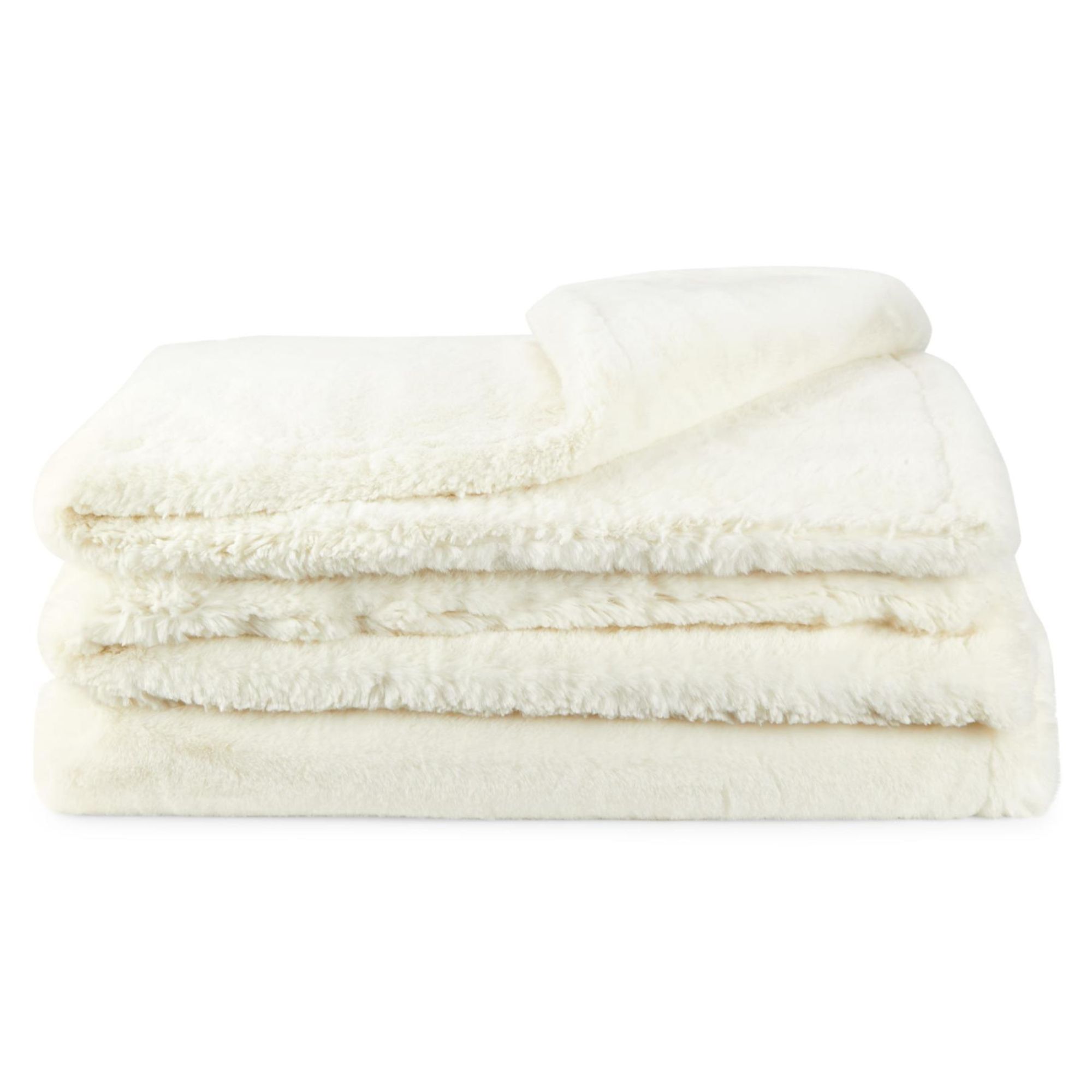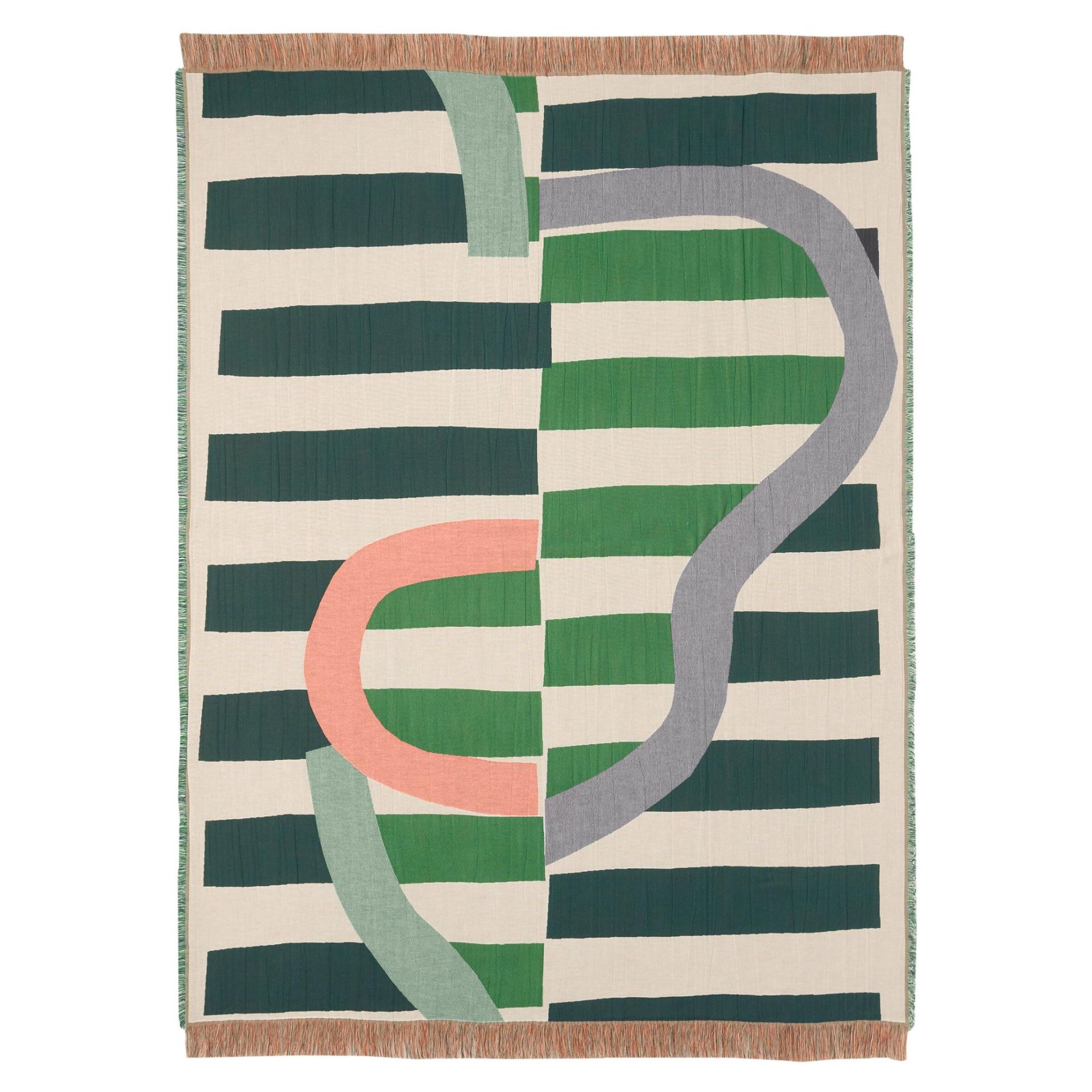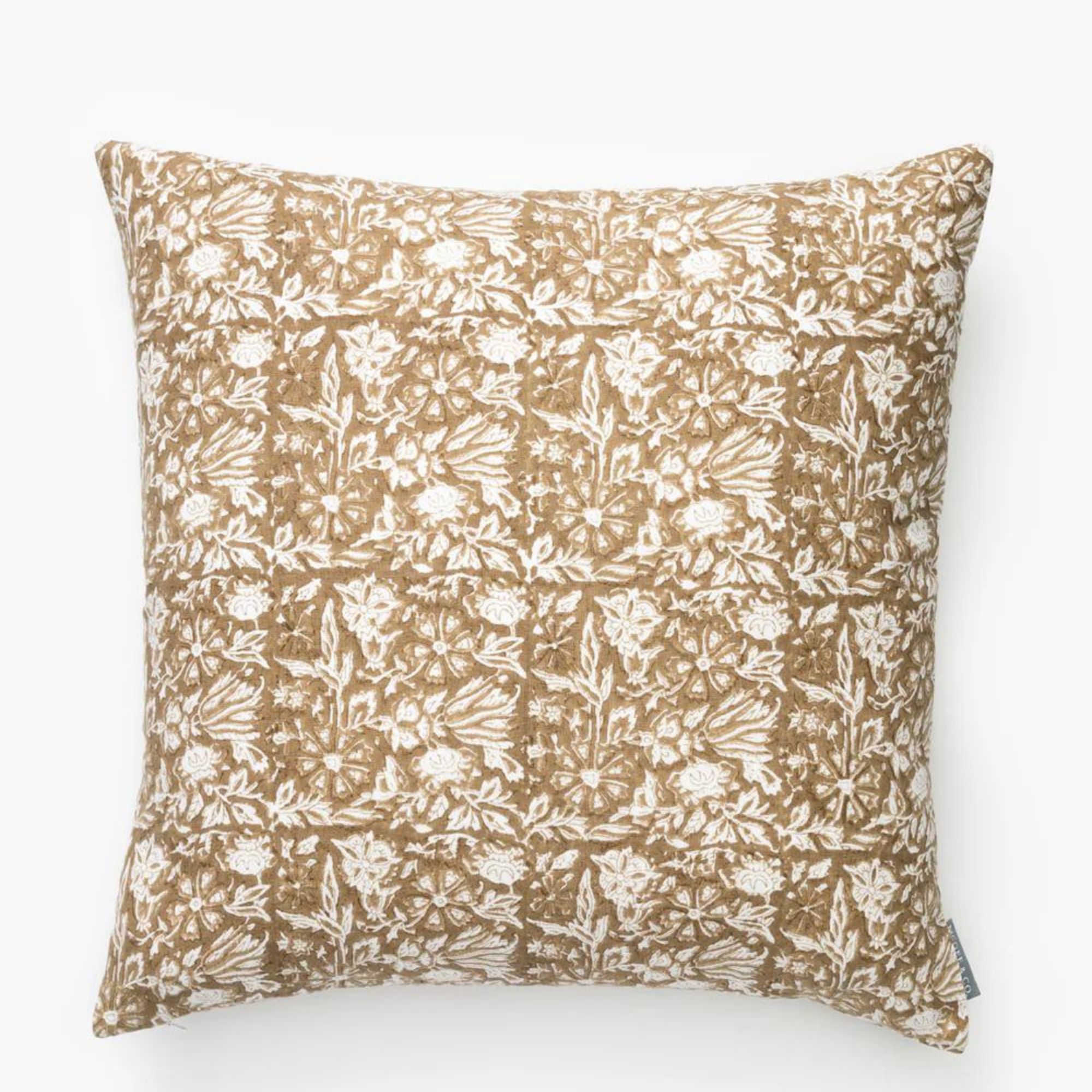What is a great room? 12 ideas to create a chic and multifunctional space
Discover inspiring multifunctional great room ideas alongside expert decorating tips
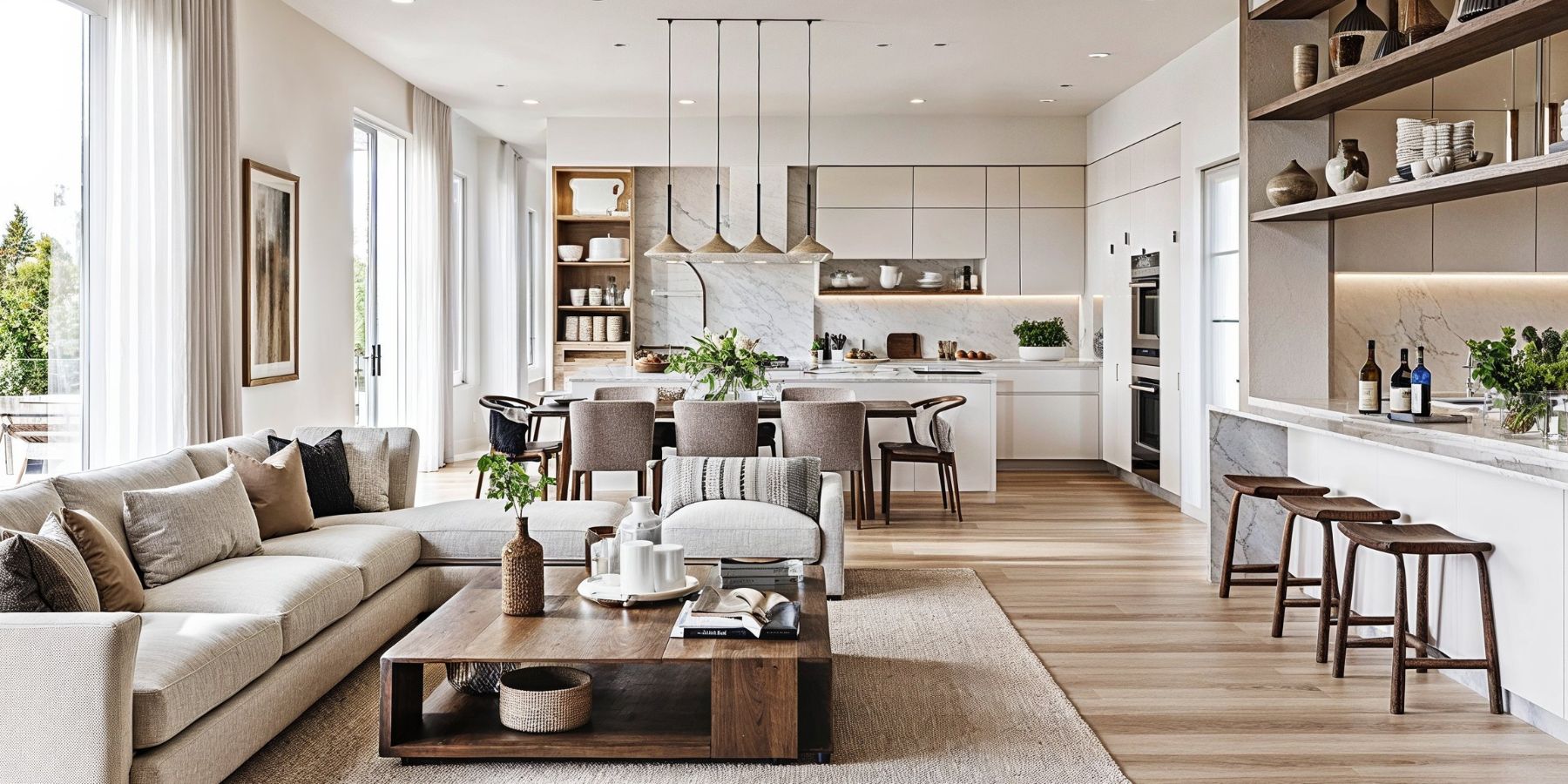
- 1. Always zone the room
- 2. Create visual harmony with a neutral palette
- 3. Divide the room with a double-sided fireplace
- 4. Decorate with dark colors for a cozy feel
- 5. Keep sightlines clear
- 6. Embrace natural materials for a modern rustic look
- 7. Zone the space with open shelving
- 8. Incorporate plenty of seating
- 9. Layer texture to create an inviting atmosphere
- 10. Consider a wallpaper
- 11. Don't forget the window treatments
- 12. Keep furnishing in proportion with your space

If you haven't heard of a great room, you aren't alone. Even though this type of room has been around for centuries, the great room has definitely been making a comeback in 2024 with designers creating these spaces more and more frequently thanks to their versatility and universal appeal.
Great rooms are large living spaces that serve multiple functions. Often they are open-plan and combine living, dining and even kitchen areas. These open-plan layouts and connected spaces are a popular feature of modern homes – not only do they enhance the feeling of space and allow easy access between different areas, they also promote a social atmosphere.
Great rooms offer the ability to cook, dine, relax, and entertain all within one space making them the perfect flexible and functional family room. To get you inspired we've gathered an array of stunning great room ideas alongside some handy tips from the interior designers behind them.
1. Always zone the room
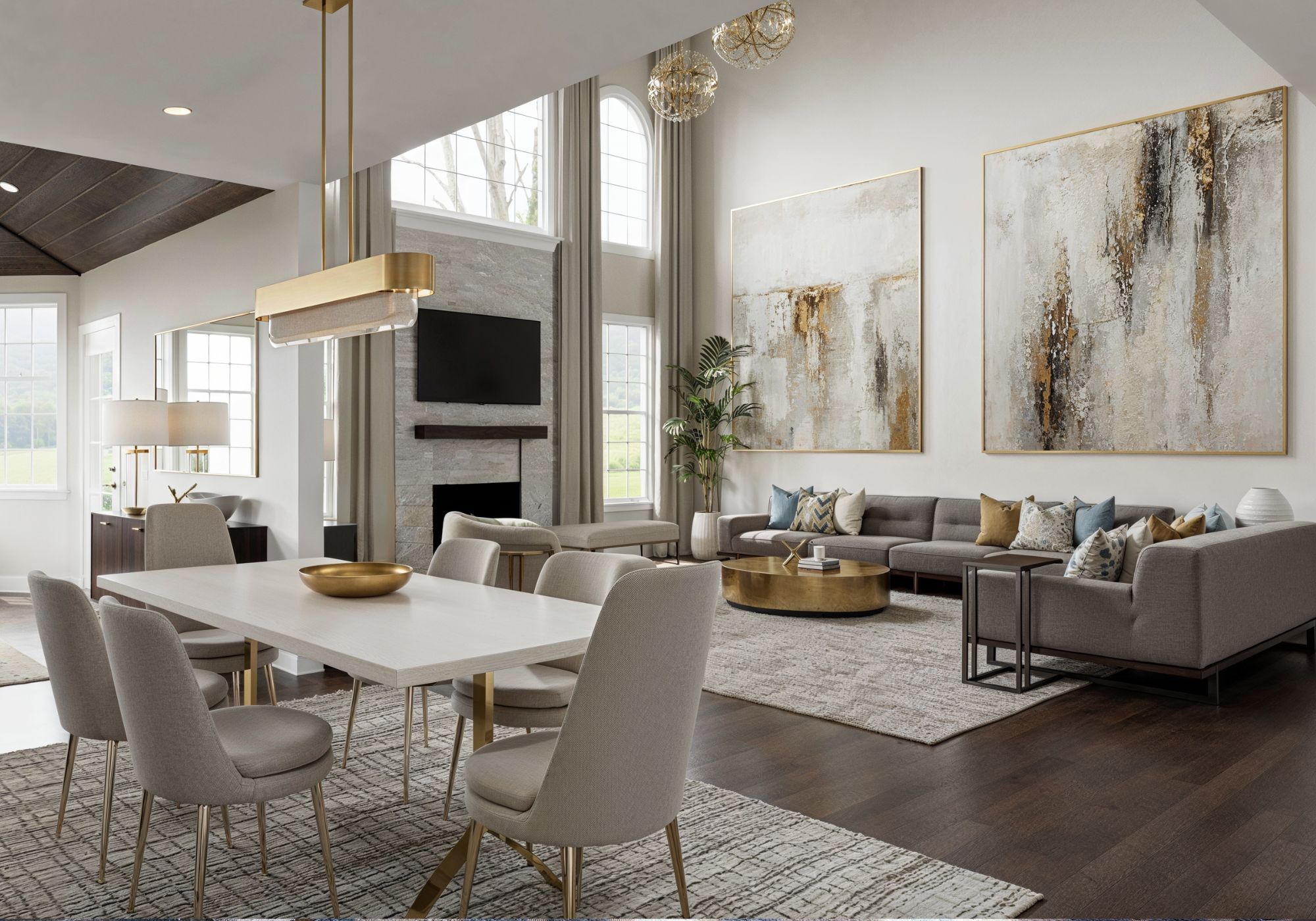
The key to designing a successful great room is balancing function with comfort, flow and aesthetic appeal. As with open-plan living rooms, different zones or areas need to be designed to serve their intended purpose, but they also need to be seamlessly connected both spatially and visually.
There are many ways to zone certain areas of a great room to ensure different areas have their own identity and function yet remain connected. Partition walls, columns, beams and changes in floor levels are a great way to define great rooms if you are embarking on a structural renovation or a new build. Alternatively, strategically positioned furniture, rugs, curtains, and lighting are great room divider ideas that don't involve disruptive building work.
‘I’m always excited when it comes to designing great rooms, they are truly the heart of modern homes. A great room usually combines living and dining areas, and sometimes even the kitchen, into just one open and multifunctional space,’ says Anna Tatsioni, lead interior designer at Decorilla.

Anna Tatsioni is a Lead Interior Designer & Architect at Decorilla Online Interior Design, a service that connects customers with vetted professional interior designers who create curated 3D and VR spaces based on customer style preferences and budget. Anna has helped thousands of clients create custom design solutions for a range of projects including, but not limited to, retail, commercial, hospitality, industrial and residential spaces.
2. Create visual harmony with a neutral palette
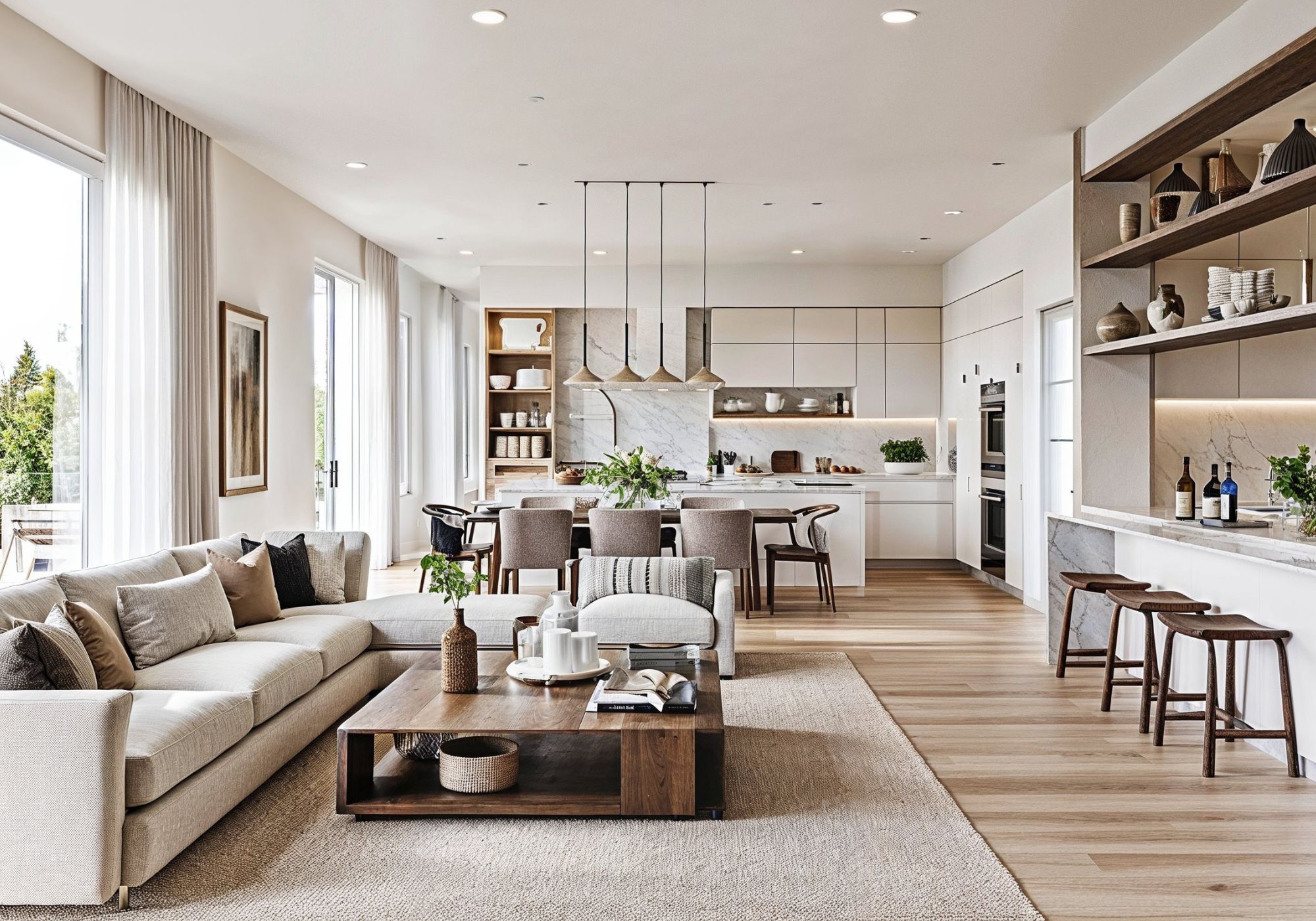
When creating a great room that serves multiple functions it's important the space feels visually unified. Opting for the same palette throughout is the simplest way to achieve this and decorating with neutrals in an array of subtle off-white and warm tones is guaranteed to create an open, airy feel which also feels warm and comfortable.
'For the wall colors, my go-to are warm neutrals like a soft grey or a creamy white,' explains Anna. 'However, when I want to add bold character I like to paint an accent wall in a deep and moody blue, and trust me, this will transform the space immediately.'
3. Divide the room with a double-sided fireplace
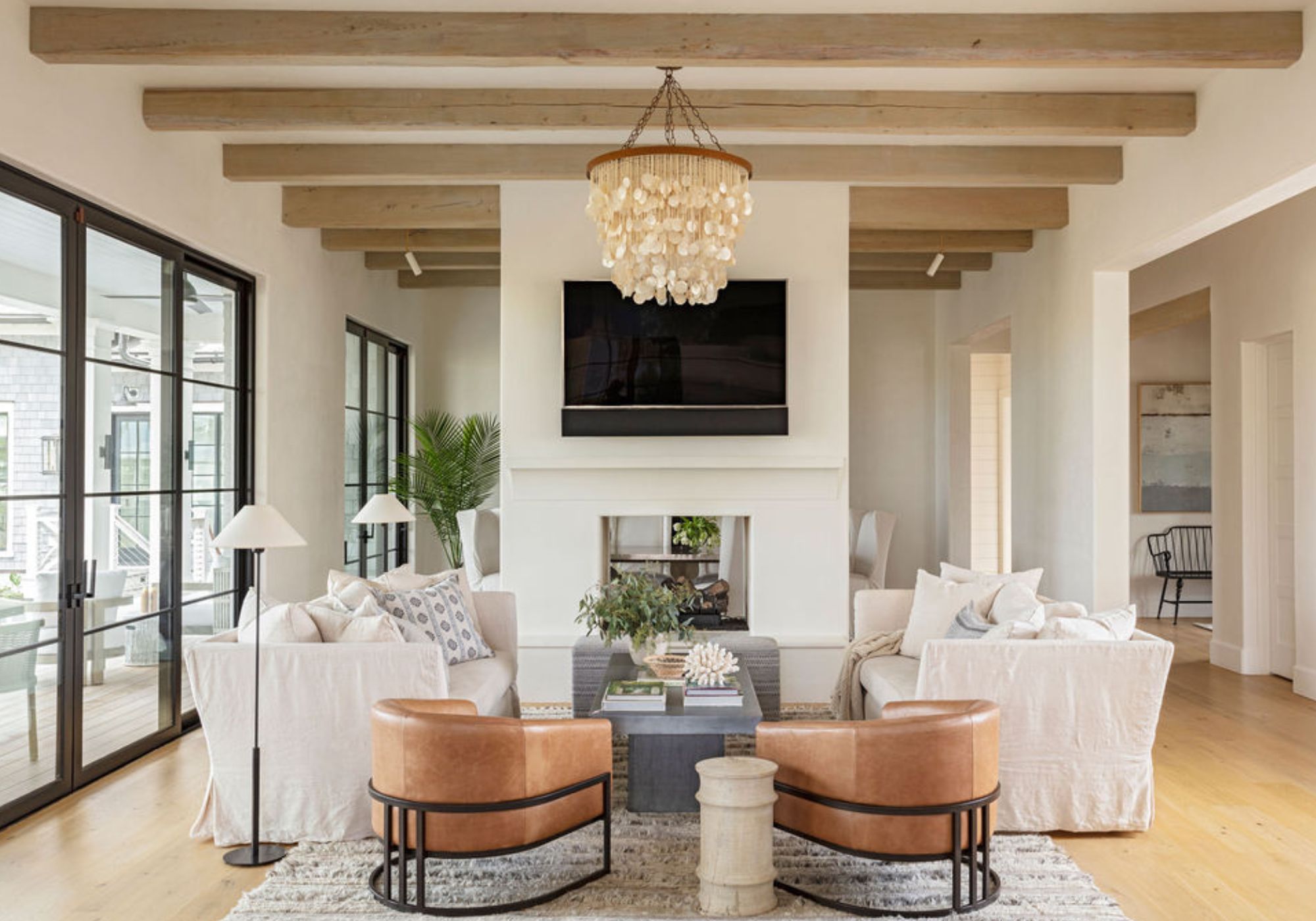
To function well, great rooms need to be carefully thought out and ‘zoned’ to serve different purposes. If you're planning a renovation or a new build then factoring in partitions, columns or beams is a great way to achieve this - if you have the opportunity why not create a beautiful focal point with a double-sided fireplace idea? Alternatively, if structural divides aren't an option, cleverly chosen furniture, rugs, lighting and shelving are all effective zoning devices.
‘Our client's vision for the space was an open concept with smooth traffic flow for everyday life and frequent entertaining. Additionally, they desired a private, separated dining area for more formal dining occasions,’ says Heather Allison, designer at Herlong Architects and Interiors. ‘This room successfully fulfills these design requests and features within its square footage. The double-sided fireplace enhances the open feel, complemented by expansive windows and doors that offer uninterrupted views of the marsh. Consistent finish materials, from the flooring to the plaster walls and white oak ceiling beams, ensure a seamless transition between the areas.’
4. Decorate with dark colors for a cozy feel
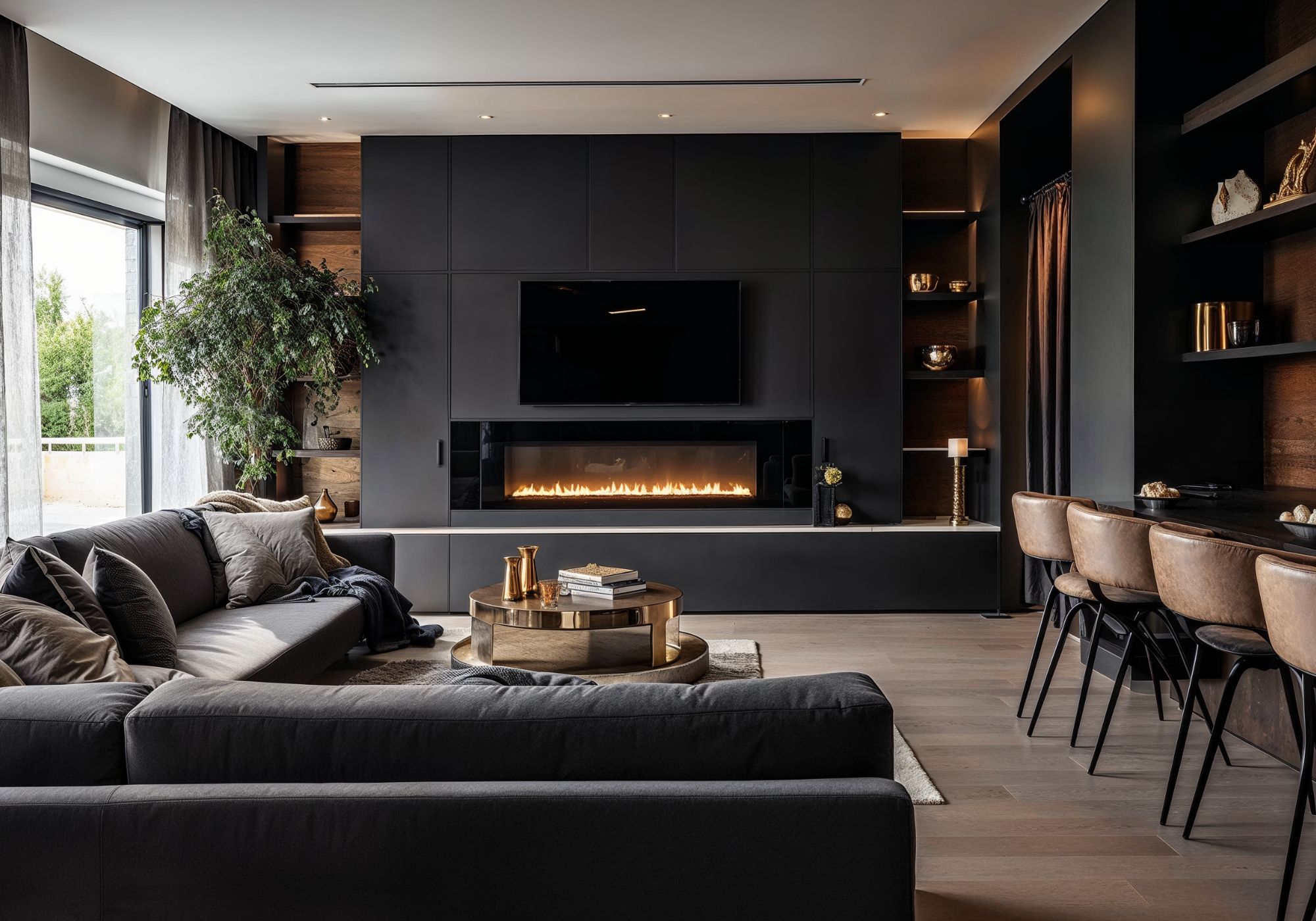
Great rooms often have a large footprint, so they can feel stark and unwelcoming without careful attention to decor. If you're brave enough, drenching a room in a dark color can help make vast spaces feel more intimate and cozy, not to mention super chic and sophisticated. Dark walls also make a wonderful backdrop for metallic features if you're looking for a luxury living room aesthetic.
'The dark colors help create a cozy and sophisticated aesthetic, despite it being a large, open space. There are several elements that combine well with the dark colors used in the room, while giving it a high-end and carefully curated feel,' says Anna Tatsioni. 'For example, the wood tones, tan chairs, and metallic accents add depth and warmth to the space, especially in combination with the fireplace. Lastly, the dark interior creates a striking frame for the bright outdoor view, while it also allows the TV to blend seamlessly into the wall when not in use.'
If you love this look then be sure to check out our dark living room ideas for more inspiration.
5. Keep sightlines clear
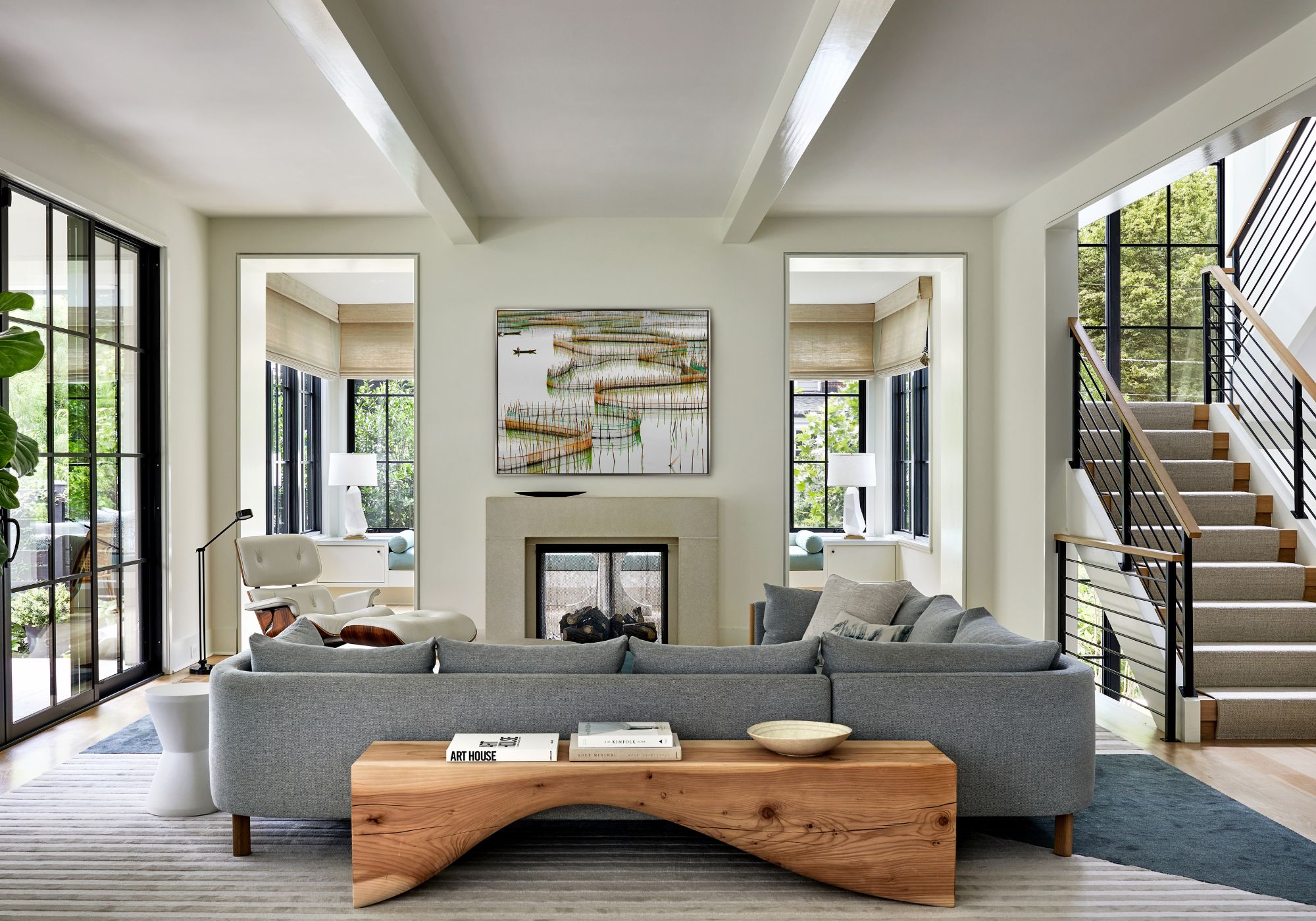
The most successful great rooms are ones that combine multiple functions but still feel open, clutter-free and spacious. Keeping sightlines clear across great rooms and opting for low-profile furniture is a wonderful way to achieve this as done in this space by Catherine Ebert Interiors. If you're lucky enough to have a great room with spectacular views, then it's also important to create a design that allows you to enjoy them rather than obstruct them.
‘This great room is combined with the kitchen but it is defined architecturally with ceiling beams and cased openings. We floated the furnishings in the room to leave ample space for walking since this is a pass-through space,’ says Catherine Ebert. ‘We also selected seating with low profiles to keep the line of sight between rooms open. The sculptural bench at the back of the sectional sofa is not only beautiful but it serves as an important connector between the seating area and the kitchen area.’

Catherine Ebert is the founder of Catherine Ebert Interiors - a boutique design studio specializing on high-end residential projects in and around New York City and Washington DC. Drawing on a background in architecture, Catherine creates contemporary, luxury spaces grounded with clean modern furnishings. She loves to mix up styles and curate contemporary art and objects.
6. Embrace natural materials for a modern rustic look
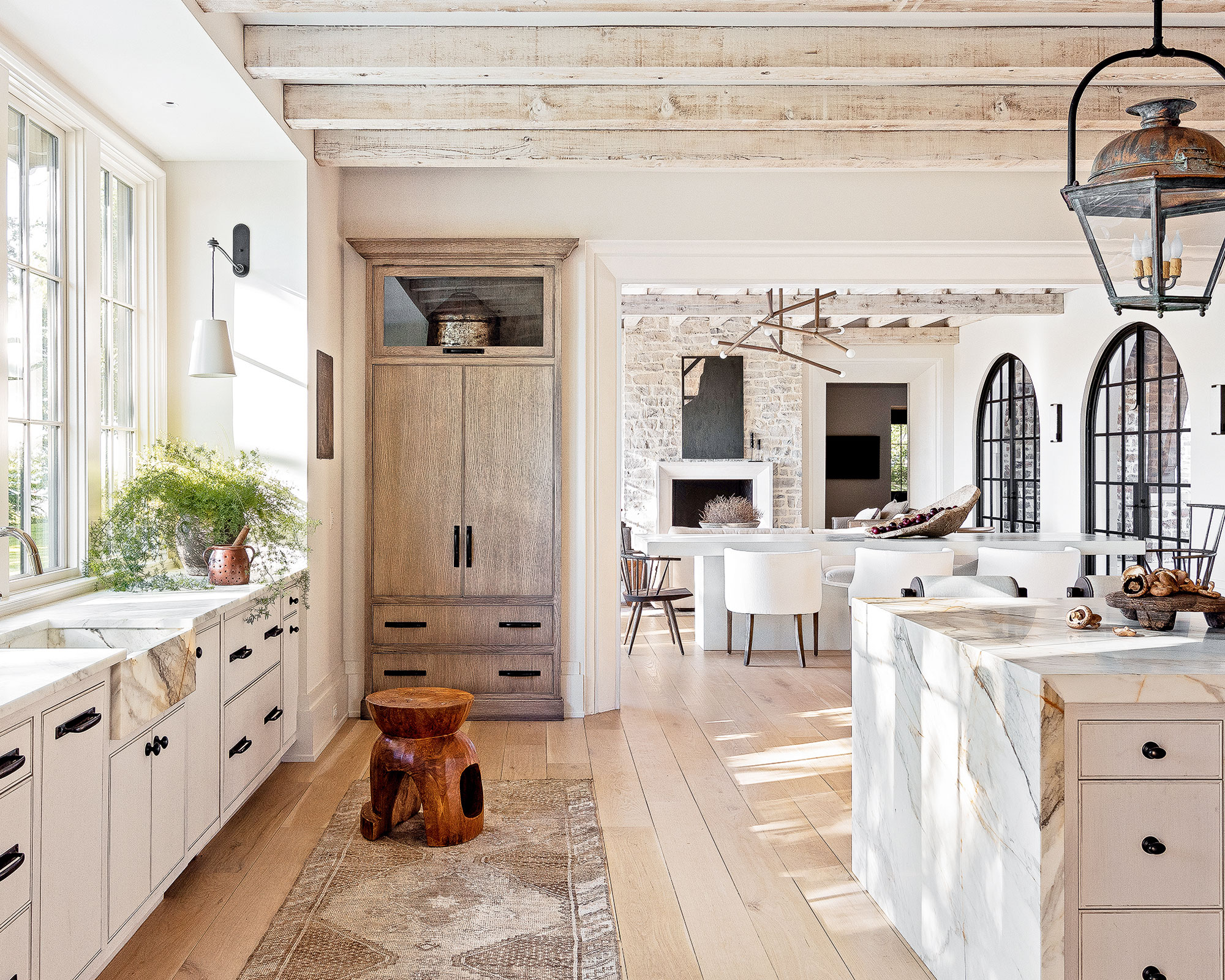
If you're looking to create a refined yet rustic space then the interiors of Sean Anderson offer a masterclass in the modern rustic aesthetic. Renowned for his use of neutral palettes and natural materials he seeks to make the 'ordinary extraordinary'. In the stunning great room of this Alabama home, which encompasses a large kitchen, dining, and living area, Sean Anderson has teamed raw stone, marble, timber and steel to create a chic country space. He aimed to infuse the space with 'Californian organic modern style' as well as to create a 'sense of permanence'.
'I'd say my layering is what I'm best known for. I love juxtaposing colors that live within that classic, organic palette and finding new ways of presenting them,' says Sean Anderson. 'That's part of what thrills me about this work - the tension created by colligating something light with something dark, or something rough with something fine,' he adds.
7. Zone the space with open shelving
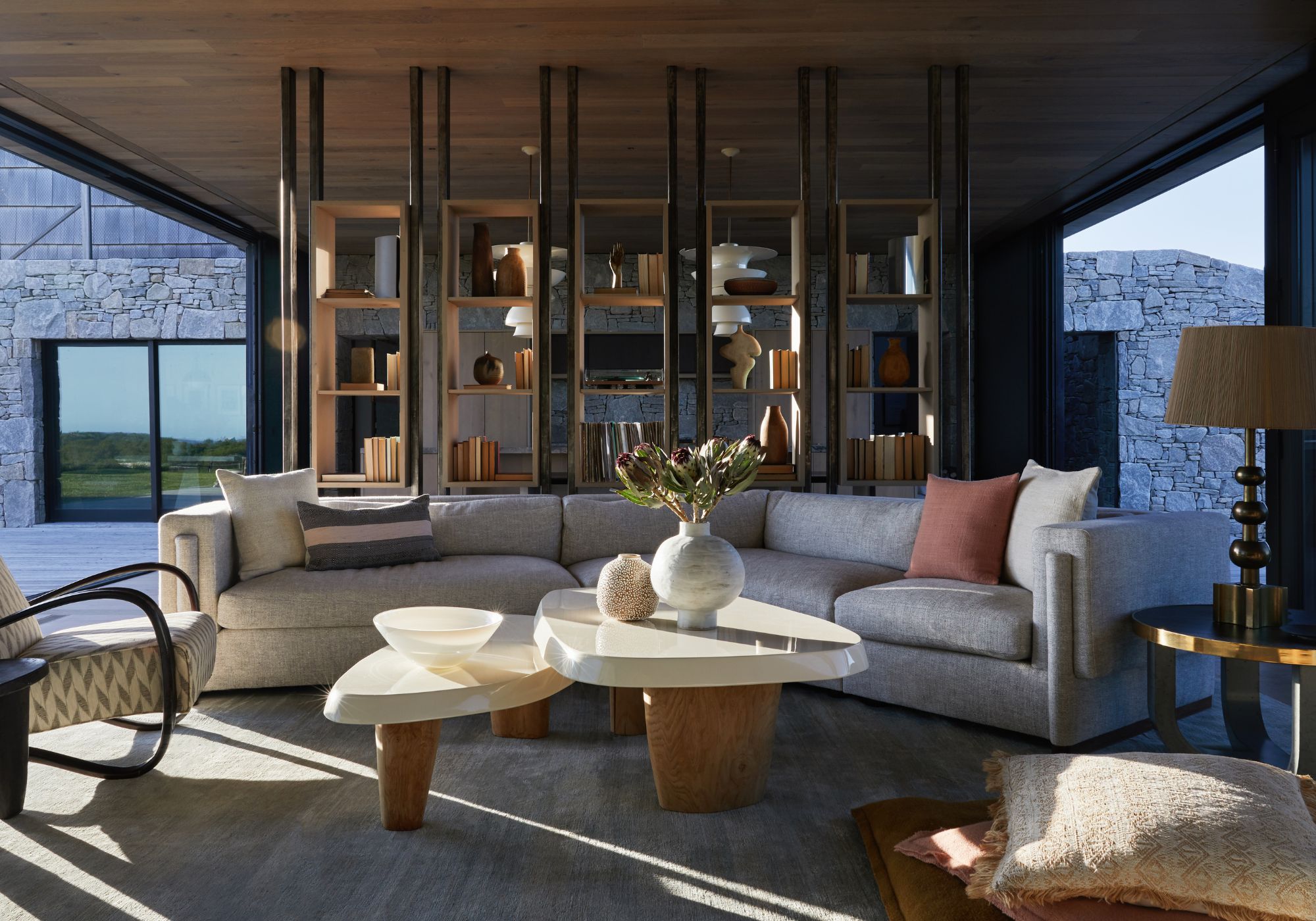
Open shelving is another great way to zone a large great room without sacrificing light, as demonstrated here by Chused & Co. Here the living room shelving provides space to display beautiful objects but equally acts as a piece of functional sculpture in itself.
'In our Montauk project, we were able to separate the family area without blocking the natural light provided by the floor-to-ceiling windows. Reimaging furniture as an extension of the room provides a solution to difficult spacing, as shown through the use of this open-plan bookcase,' explains Jenna Chused, founder of Chused & Co.
8. Incorporate plenty of seating
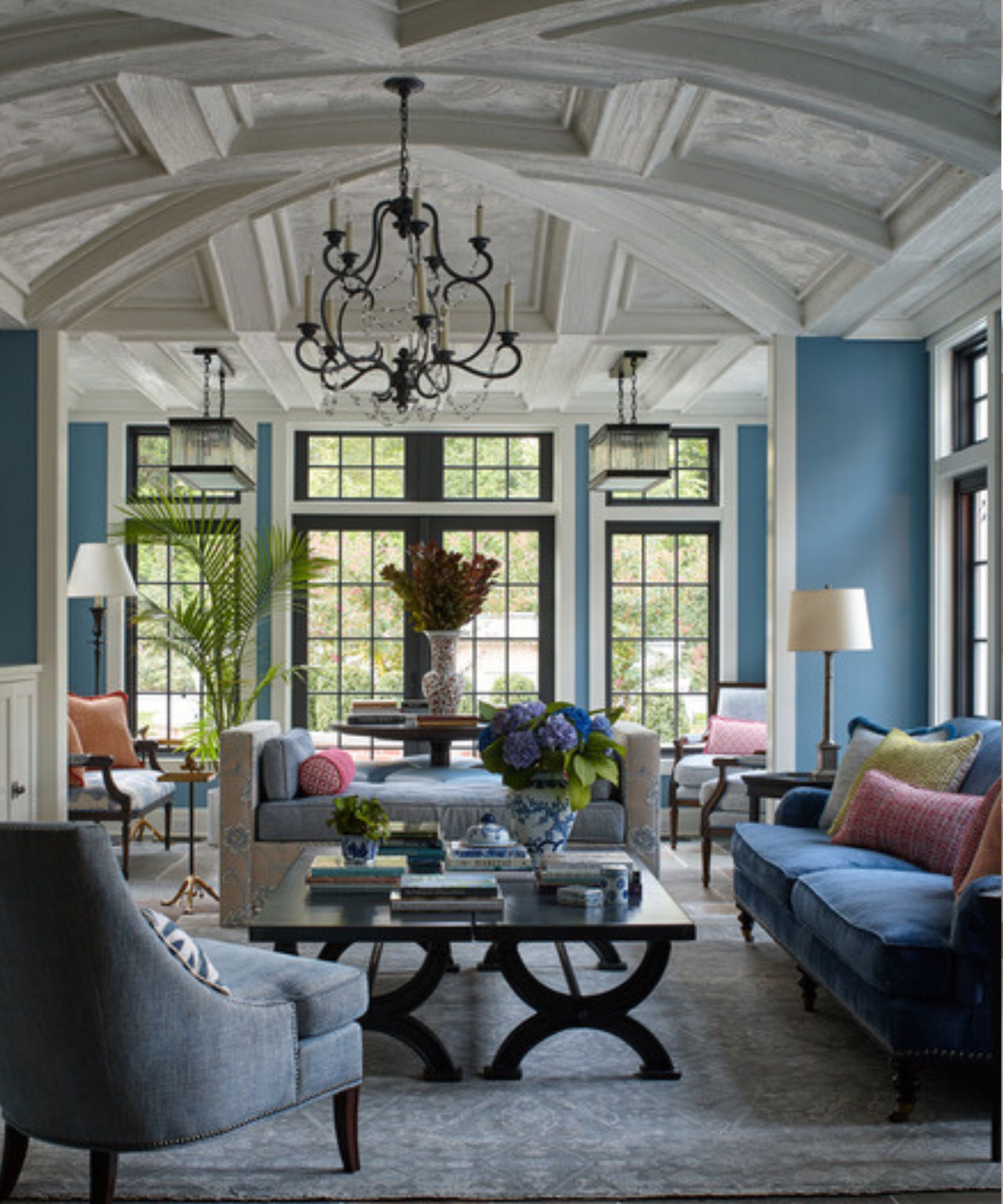
Factoring plenty of seating is important when designing a large great room with social spaces. In this project, KA Murphy Interiors provided ample seating combining a variety of seating styles to bring a relaxed feel to the space.
'What makes this room ideal for entertaining is its flexibility. There are about a dozen places for people to sit, which you may not notice until you actually need a seat. The seating options include a bench, ottomans, two armchairs, a sofa, four stools, and a backless chaise lounge that can be positioned to face those at the table, sofa, or both,' explains Kevie Murphy, founder of KA Murphy Interiors.
'I find it great that there is a wide range of options for people to feel comfortable and move around. Against the advice of most architects, I strategically placed the sofa in front of the outward-swinging doors, so the room feels like an extension of the backyard, bringing the outside in and complementing the grand windows. Although the narrow room wasn't conducive to a central seating area, elements like the fluid seating spaces, access to the outside, the Ruford fireplace, and the Palladian ceiling make this space the perfect hub for a party.'
9. Layer texture to create an inviting atmosphere
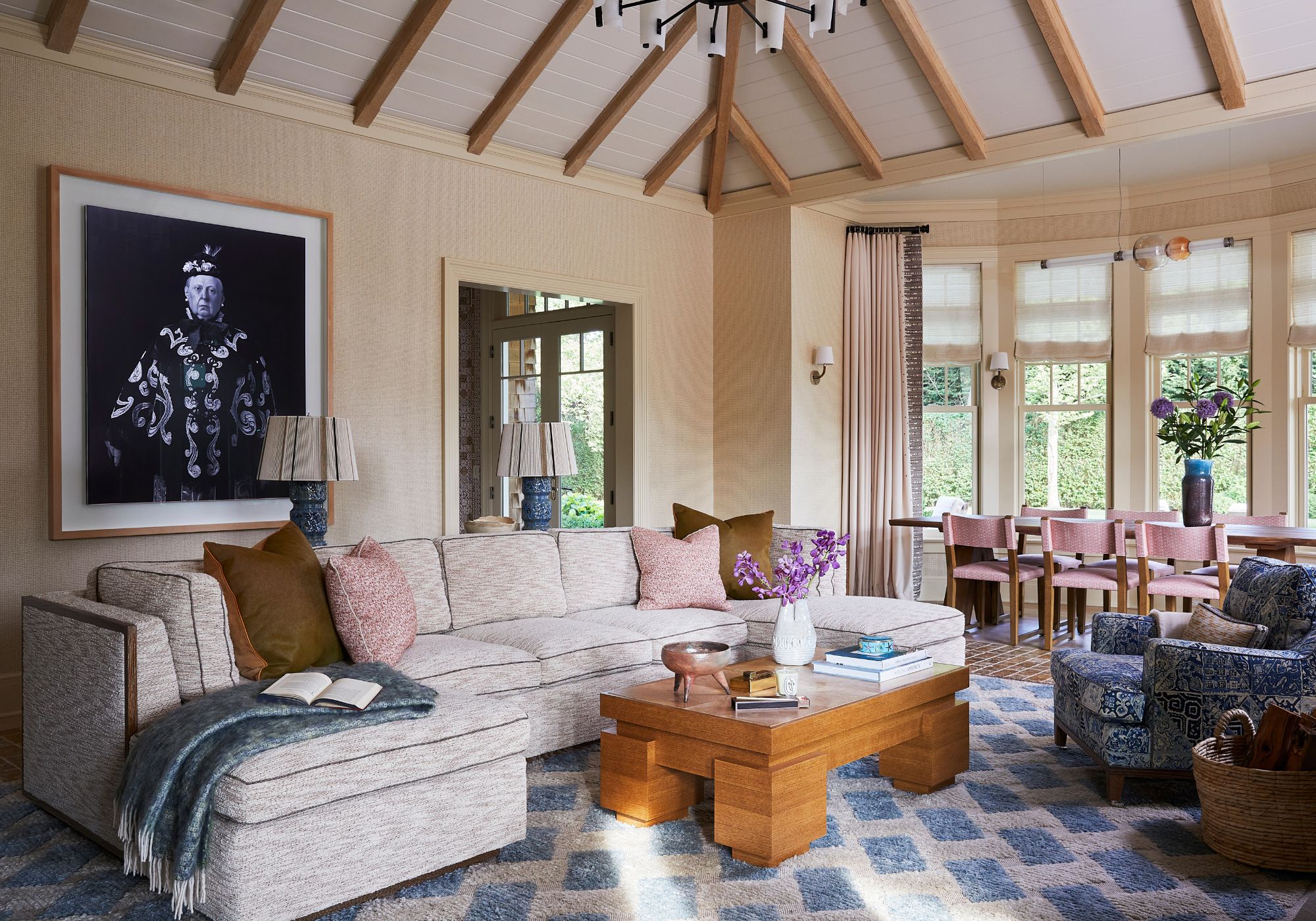
Large great rooms can easily feel empty and unwelcoming, especially if you’re decorating in neutrals, so it’s important to think about how to remedy this within the interior design. To create a warm and welcoming feel, layer different textures in interior design as done here by New York City-based interior designer Phillip Thomas.
‘The client wanted a space that served multiple purposes. They wanted the space to be dramatic and spacious while still feeling intimate which they could enjoy with friends and family. We decided to tray the ceiling and use wood beams to draw the eyes up to make it seem bigger while also making it feel cozy. Texture was important here. We incorporated woven wall coverings, texture on the sofa and rugs to help the space feel vibrant and welcoming,’ explains Phillip Thomas.
10. Consider a wallpaper
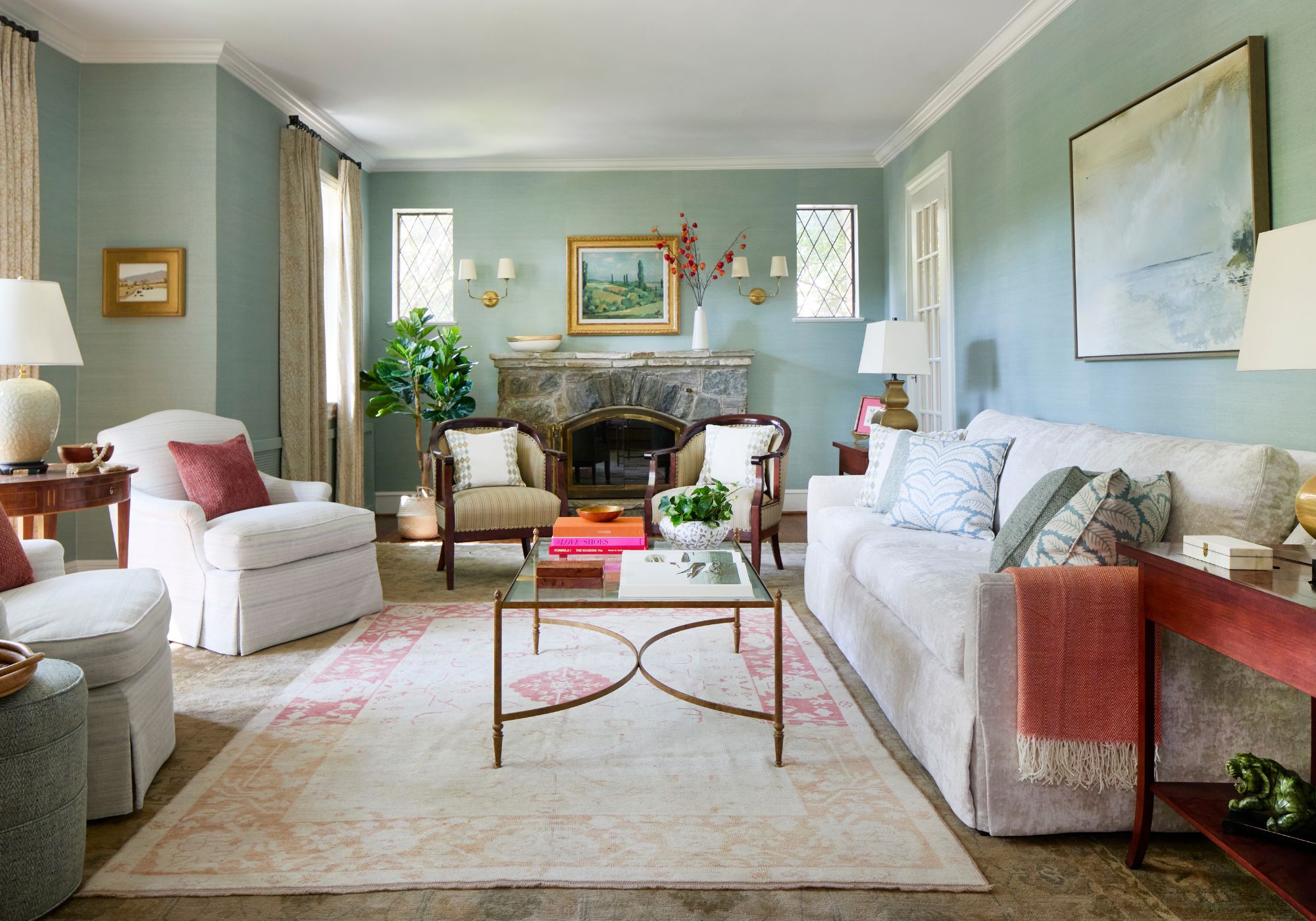
While paint is often the go-to for decorating living rooms, the beauty of wallpaper is that it can be used to bring gentle texture and pattern for a more intimate feel. Here Annie Elliot chose a subtle grasscloth which gives a subtle shimmer and also helps bounce light across the room - paired with timeless white upholstery with pops of coral, the result is a classic and elegant space.
‘Our primary motivation in redesigning this space was to inject some subtle color but retain a cozy, restful feel,’ says Annie Elliott, founder of Annie Elliott Interiors. ‘First, we put up a soft aqua grasscloth to complement the beautiful stone fireplace and provide just enough color. Then we brought in an off-white sofa and lounge chairs to brighten the space. The little jolts of dark coral in the rug and pillows add further interest without making the room too colorful or choppy.’
‘The grasscloth on the walls is Phillip Jeffries' Manila Hemp in Silver Blue. I'm a huge fan of grasscloth because it can provide brightness (grasscloth has a naturally reflective quality) even when the color isn't super light. Here, the medium tone keeps the space feeling warm but not dark.’
11. Don't forget the window treatments
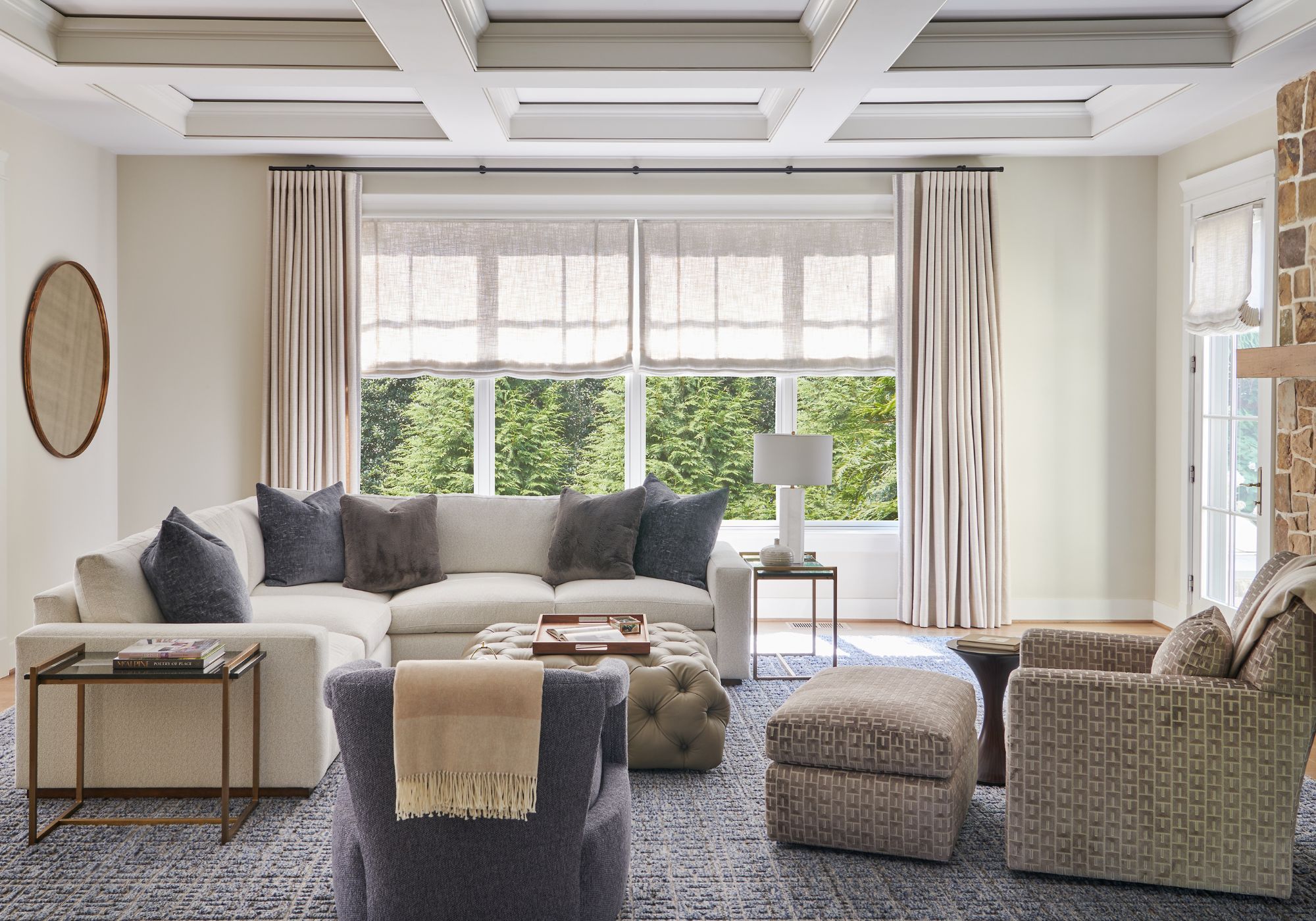
When decorating a great room it's easy to get carried away with wall color, furniture and accessory choices, but window treatments are an integral part of the comfort and function of the overall design and should be factored in from the outset. Not only do they provide privacy and light control, they also help insulate sound and heat creating an overall more comfortable living area.
Sleek roller or Venetian blinds are great for a clean, contemporary look. However, if you're looking for a more welcoming, warm and timeless look then classic curtains and Roman blinds in a neutral fabric are the way to go.
‘The great room is such a multi-purpose space. You need to make sure that the window treatments allow flexibility of function and add texture to the space. We installed both the Roman shades and drapes to give the windows a layered look. Also, they are functional as the sun pours into the windows in the afternoons. The Roman shades are individually operated and can block out the sun. The draperies are functional and provide comfort and warmth in the colder months,’ says Tracy Morris, founder of Tracy Morris Design.
‘I wanted the blue tone to stand out in the space. To achieve this, the other tones in the room needed to be neutral. I chose textured linen for both the Roman shades and drapes. The fabrics provide needed texture without overpowering with color.’
12. Keep furnishing in proportion with your space
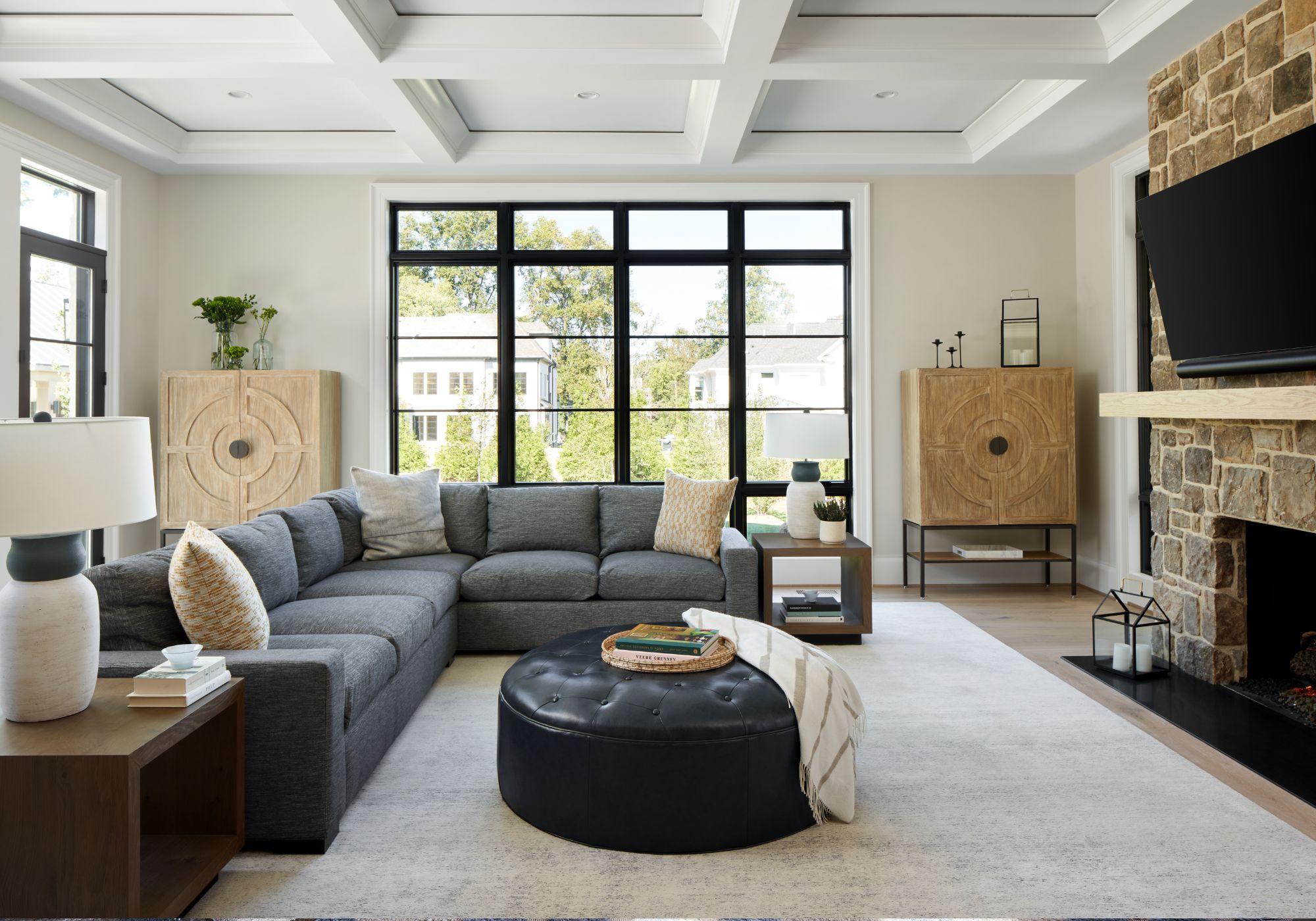
Great rooms often have a vast footprint so it's important to choose furniture that won't feel dwarfed by the space. Don't be afraid to opt for large pieces. These will not only be functional but also help visually anchor the space. Opting for large pieces, even in smaller spaces brings an air of confidence and purpose to interior design.
'A sectional was chosen for this space because the family wanted a space to sit together and watch movies. This family, with two small boys, wanted a space to all gather and hang out. This meant having a sectional that allowed everyone to lounge yet keeping the lines of the piece tailored – the best of both worlds,' says Tracy Morris.
'To bring warmth and comfort to the space, we decided to use a large format area living room rug and add in some natural wood pieces. With two young boys, we knew the carpet area would be the most used space. We wanted to provide the family with maximum comfort and play space. The wood furniture pieces were brought in not only for needed storage, but for warmth. The tone of the wood softens the black windows and creates a cozy feeling.'
The beauty of great rooms is that they provide flexible and connected living spaces that promote quality family time. Open-plan layouts allow easy access between different zones or area, plus they maximize space and light within the home resulting in a more uplifting atmosphere.
Sign up to the Homes & Gardens newsletter
Design expertise in your inbox – from inspiring decorating ideas and beautiful celebrity homes to practical gardening advice and shopping round-ups.

Pippa is a contributor to Homes & Gardens. A graduate of Art History and formerly Style Editor at Period Living, she is passionate about architecture, creating decorating content, interior styling and writing about craft and historic homes. She enjoys searching out beautiful images and the latest trends to share with the Homes & Gardens audience. A keen gardener, when she’s not writing, you’ll find her growing flowers on her yard for styling projects.
-
 5 surprising but brilliant ways to clean with old socks – from perfectly buffing stainless steel to deterring pests naturally and more
5 surprising but brilliant ways to clean with old socks – from perfectly buffing stainless steel to deterring pests naturally and moreTackle dust in tricky corners, clean your mirrors and even banish bad odors with those rogue single socks
By Andy van Terheyden Published
-
 How to grow astilbe – expert advice on cultivating this shade-tolerant flowering perennial
How to grow astilbe – expert advice on cultivating this shade-tolerant flowering perennialShade-tolerant and pest-resistant - astilbe are hardy and tough perennials that can thrive in many settings
By Ellen Wells Published
